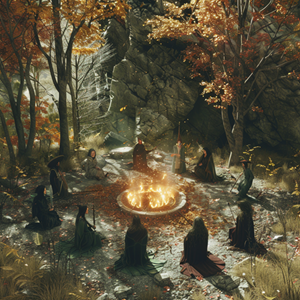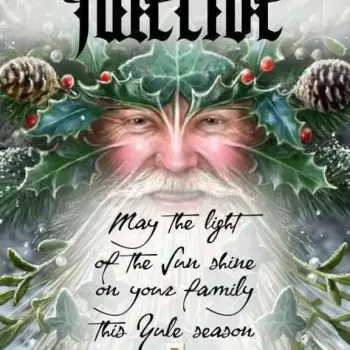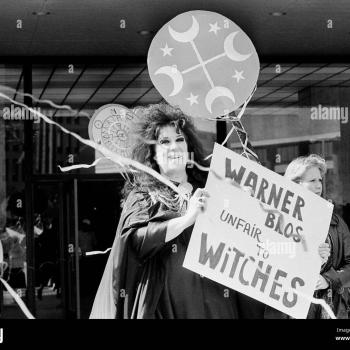These days, TikTok is in the news quite a bit. Will there be a ban and will that be a good thing, or is it censorship? In the ever-evolving landscape of social media, platforms like TikTok, and its many varied sub-communities have emerged as powerful forces shaping cultural phenomena. One particularly intriguing development is the rise of WitchTok, a sub-community where modern-day witches share their craft.
As expected, this has been met with both happiness and derision. While WitchTok has undeniably popularized witchcraft, this digital revival comes with both notable advantages and significant drawbacks. Some argue that WitchTok and the creators on it are spreading witchcraft to a new, young audience and making it more acceptable, while others believe that WitchTok is nothing more than an exploitation of Witchcraft for “clicks and views” and, worse yet, spreads harmful misinformation and practices to those who don’t know any better and don’t have any accurate sources to fact check what they learn on the platform. Let’s take a look at both arguments.
The Case for WitchTok – Sharing the Craft

Increased Visibility and Acceptance
One of the main arguments in defense of WitchTok is that it has brought witchcraft out of the shadows and into the mainstream, challenging outdated stereotypes. Historically, witches have been marginalized, often misunderstood and vilified. However, through engaging and informative content, modern practitioners demystify their practices, showcasing witchcraft as a spiritual and often therapeutic endeavor. This visibility has fostered greater acceptance and inclusivity within broader society. Arguably, it has also served to show the millions of Tiktok subscribers what a witch is, and isn’t – demystifying and breaking the stereotypes surrounding what a “real witch” looks like and does in the real world.
Educational Resource
For those interested in witchcraft, some have argued that WitchTok serves as a valuable educational resource. Creators share tutorials on a range of topics, from spell casting and tarot reading to herbalism and moon rituals. This wealth of information makes learning accessible, particularly for those without access to traditional sources of knowledge, such as covens or occult bookstores. Moreover, the bite-sized format of TikTok videos is ideal for digesting complex topics in an easily understandable manner. WitchTok also serves to share practices and knowledge from a variety of traditions, including those which are purported to be “closed” or “initiatory”, claiming to give insight into that which otherwise might not be shared.
Community Building
WitchTok, like many other sub-communities on TikTok, has created a vibrant, supportive community for practitioners who might otherwise feel isolated. It offers a “safe place” for those who are in the perpetual “broom closet” to go and be with others who practice and allows them to feel like they are a part of a group and that they are not alone. The platform allows witches from around the world to connect, share experiences, and support one another. This sense of community can be especially empowering for young or solitary practitioners, providing them with a sense of belonging.
Innovation and Adaptation
One final argument made by supporters of the WitchTok Age is that the platform has launched Witchcraft into more modern times and made it both acceptable and accessible. The digital nature of WitchTok encourages innovation and adaptation within witchcraft practices. Practitioners blend traditional methods with contemporary approaches, creating a dynamic and evolving practice. This adaptability ensures that witchcraft remains relevant and resonates with younger generations, keeping the tradition alive and thriving.
The Downside – Stirring the Cauldron
Misinformation and Misrepresentation
The most common – and loudest – argument against WitchTok is that it spreads misinformation about the Craft and that content creators are irresponsible with their content. The argument is true for both the information given and the appearance that content creators represent “witches” as a whole rather than just themselves. Not all creators on WitchTok are well-versed in the practices they promote, leading to the dissemination of inaccurate or misleading information. This can result in novice witches adopting harmful practices or developing a skewed understanding of witchcraft.
Additionally, the commercial aspect of social media can sometimes prioritize sensational content over factual accuracy. Moreover, some of the misinformation and misrepresentation isn’t just harmful, it can be downright dangerous. Add to this the fact that WitchTok with all its accusations of “gatekeeping”, “toxicity”, and other unsavory labels, and one can easily see why more traditionally practicing witches don’t care for the image that witches get on WitchTok.
Cultural Appropriation
WitchTok has sparked conversations about cultural appropriation within witchcraft, which is another common grievance among those who dislike WitchTok. Some practitioners incorporate elements from various cultures without understanding their significance or seeking proper permission. This can lead to the trivialization of sacred traditions, (smudging, for example), causing harm to the communities from which these practices originate. The same is true of closed practices. WitchTok is, according to detractors, a breeding ground for disrespectful “borrowing” of closed practices, while leading viewers to believe that “what you want to use is yours to use”. Respectful and informed engagement with diverse traditions is essential to avoid perpetuating cultural insensitivity or the watering down of ancient traditions.
Commercialization of the Craft
The commercialization of witchcraft is another contentious issue. WitchTok has seen a surge in the sale of witchcraft-related products, from crystals and spell kits to tarot readings and courses. While this can make tools more accessible, it also raises concerns about the commodification of spiritual practices. The focus on material goods and the “witchy aesthetic” can overshadow the more profound, introspective aspects of witchcraft, reducing it to a trend and “witchy vibes” rather than a meaningful spiritual path.
Superficial Engagement
The fast-paced nature of TikTok can sometimes encourage superficial engagement with complex practices. Witchcraft, with its deep historical roots and rich traditions, requires thoughtful study and practice. However, the platform’s emphasis on brevity and entertainment can lead to a diluted understanding of the craft, where aesthetics and quick fixes are prioritized over genuine spiritual growth and learning. This type of engagement “cold readings”, “spontaneous” tarot card “messages”, the offering of spell work or other services for extremely high fees can lead viewers to believe that witches are not more than grifters and con artists. This is especially true of content creators who don’t seem to really have any knowledge, but are keen to dabble for likes, clicks, and monetary engagement. It’s not a good look for witches, and true witches do not appreciate the unethical implications of such behavior.
In short, WitchTok represents a double-edged sword in the realm of modern witchcraft. On one hand, it democratizes access to knowledge, builds community, and breathes new life into ancient practices. On the other, it risks spreading misinformation, fostering cultural appropriation, and commodifying spiritual traditions. As with any powerful tool, the key lies in mindful and respectful use. By approaching WitchTok with a discerning eye and a commitment to authenticity, practitioners can harness its benefits while mitigating its drawbacks, ensuring that witchcraft continues to evolve in a meaningful and respectful way.
Where do you stand in this debate? Is there truth to both sides? Weigh in in the comments!















